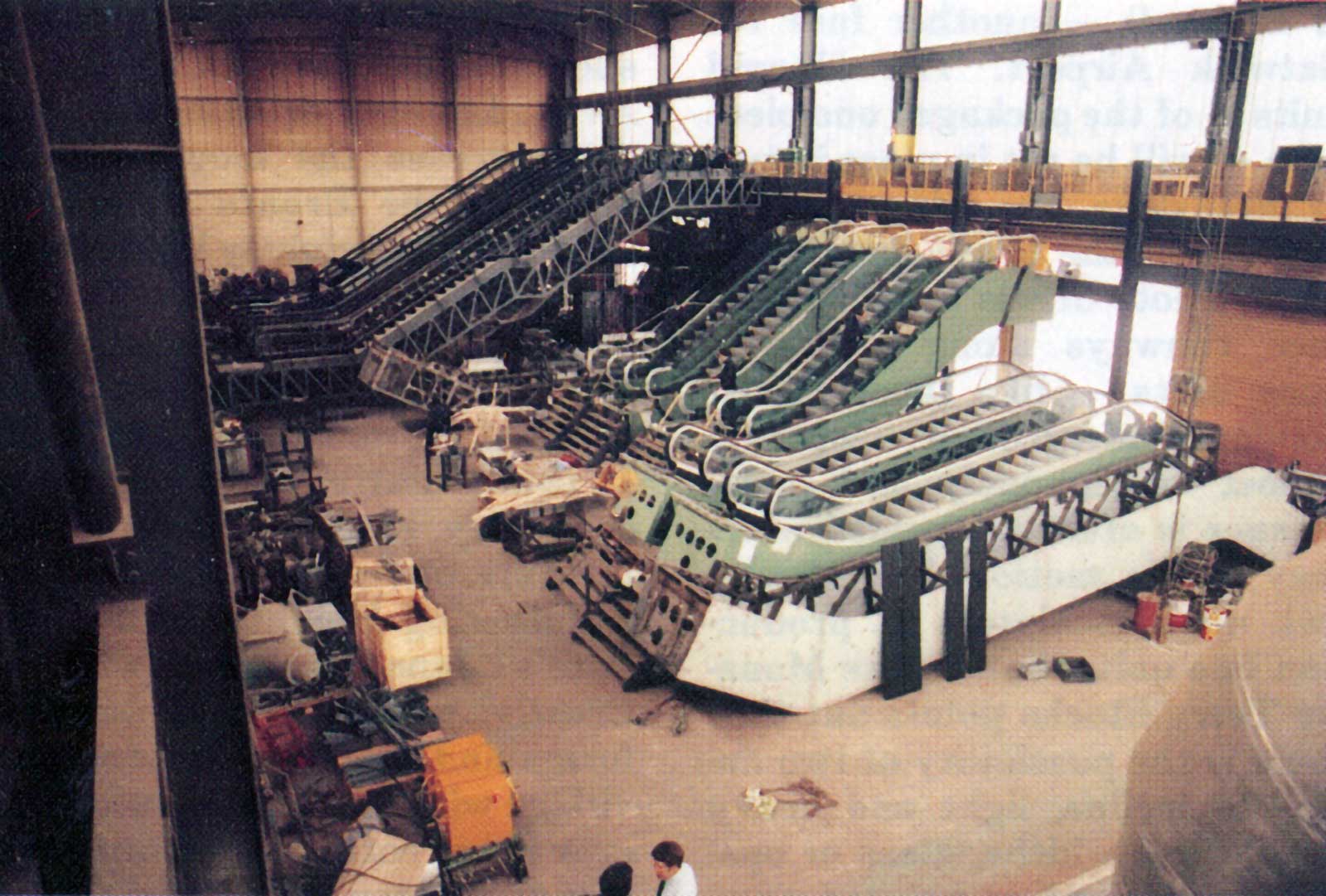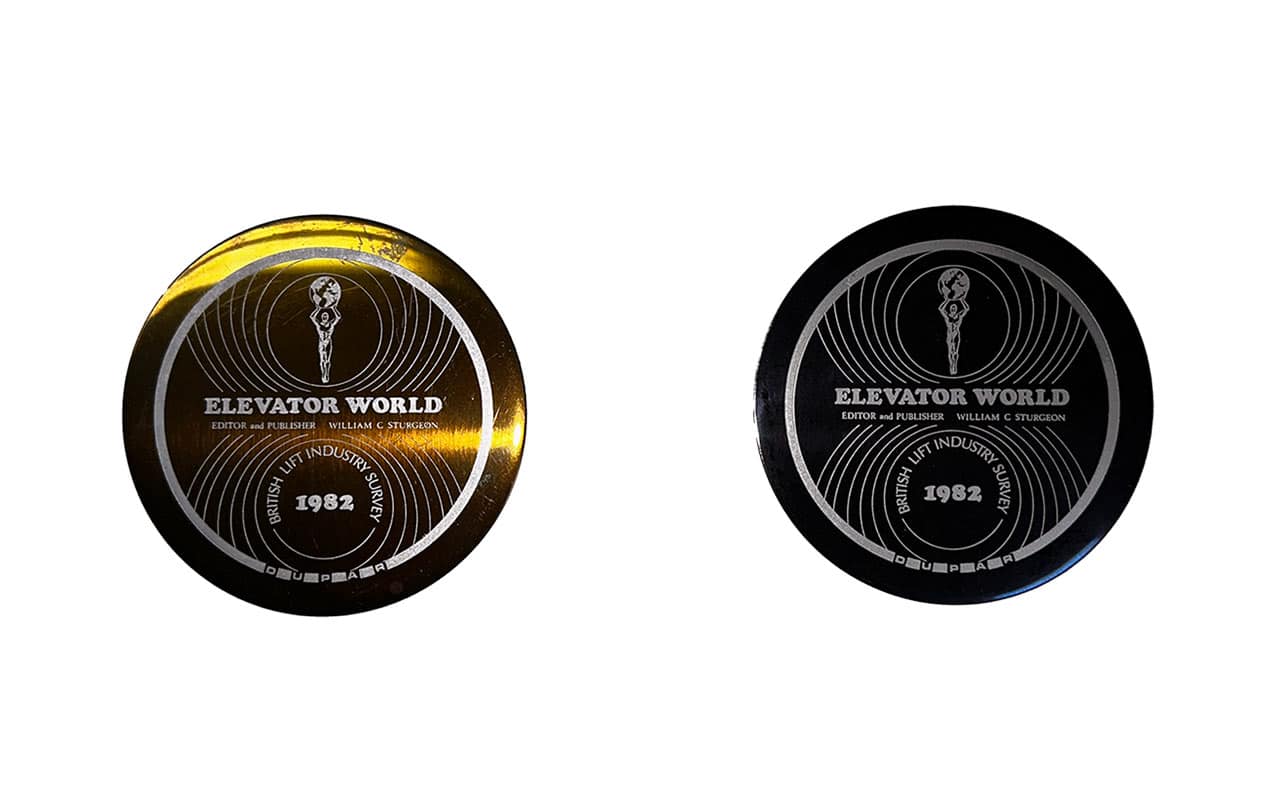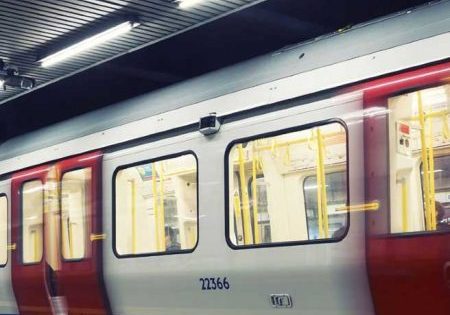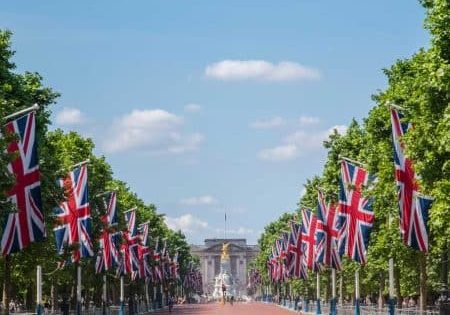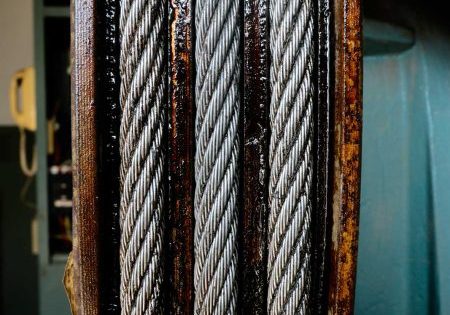A look at EW founder’s seven-week visit to the U.K. in 1982
One of British poet Robert Browning’s most famous works is best known for its opening lines, rather than its title: “Oh, to be in England now that April’s there.” The poem, Home Thoughts, From Abroad, was written in 1845 while Browning was visiting Northern Italy, and it reflected his desire to see his homeland in the springtime, as was clearly expressed in the work’s first stanza:
“Oh, to be in England
Now that April’s there,
And whoever wakes in England
Sees, some morning, unaware,
That the lowest boughs and the brushwood sheaf
Round the elm-tree bole are in tiny leaf,
While the chaffinch sings on the orchard bough
In England – now!”[1]
The poem’s connection to the history of lifts is, perhaps, a bit tangential, however it is worth noting that ELEVATOR WORLD (EW) founder William C. Sturgeon’s 1982 visit to England began in mid-April. What makes this event noteworthy, beyond the fact that Sturgeon had the pleasure of enjoying an English spring, was that it marked the beginning of an extraordinary exploration of the British vertical-transportation (VT) industry, the results of which permit a unique examination of the industry as it existed 40 years ago.
Sturgeon’s first trip to the U.K. occurred in September 1964.[2] Following this introductory visit, he made several return trips, during the course of which he established a strong relationship with various industry leaders. In 1980, Harold “Harry” Pettinger, director of the Otis Elevator Co., Ltd. (successor to Waygood-Otis) and chairman of the National Association of Lift Makers (NALM) contacted Sturgeon about a future project: “NALM will be celebrating its 50th Anniversary and it would be appropriate for an Elevator World Annual Study concerning the United Kingdom’s Lift Industry to coincide with this event.”[3] Given that NALM’s 50th Anniversary would not occur until 1982, Pettinger clearly sought to ensure that there would be ample planning time for such a venture.
Sturgeon was enthusiastic about the proposal and established an editorial committee in the summer of 1981. The committee included Pettinger, Donald W. Brooks (Schindler), Michael Amberg (Express Lift), Arthur Little (Hammond and Champness) and David Fazakerley (NALM’s executive director). Sturgeon traveled to England in October for an organizational meeting, which produced a strategy for information gathering:
“The plan involved a two-pronged attack; David Fazakerley and his staff would research the association records in the NALM office and develop the history of the association; to be published with the photographs of the men who had led it. He would inform members of the plan and pinpoint those wishing to be involved with the project. The involvees would be worked into a schedule of visitations in April and May — half the time in London and the remainder in the environs.”[3]
Perhaps the most remarkable aspect of the plan was the proposed length of time Sturgeon would commit to his U.K. visit, spanning from mid-April well into May. In the end, he devoted seven weeks to this undertaking.
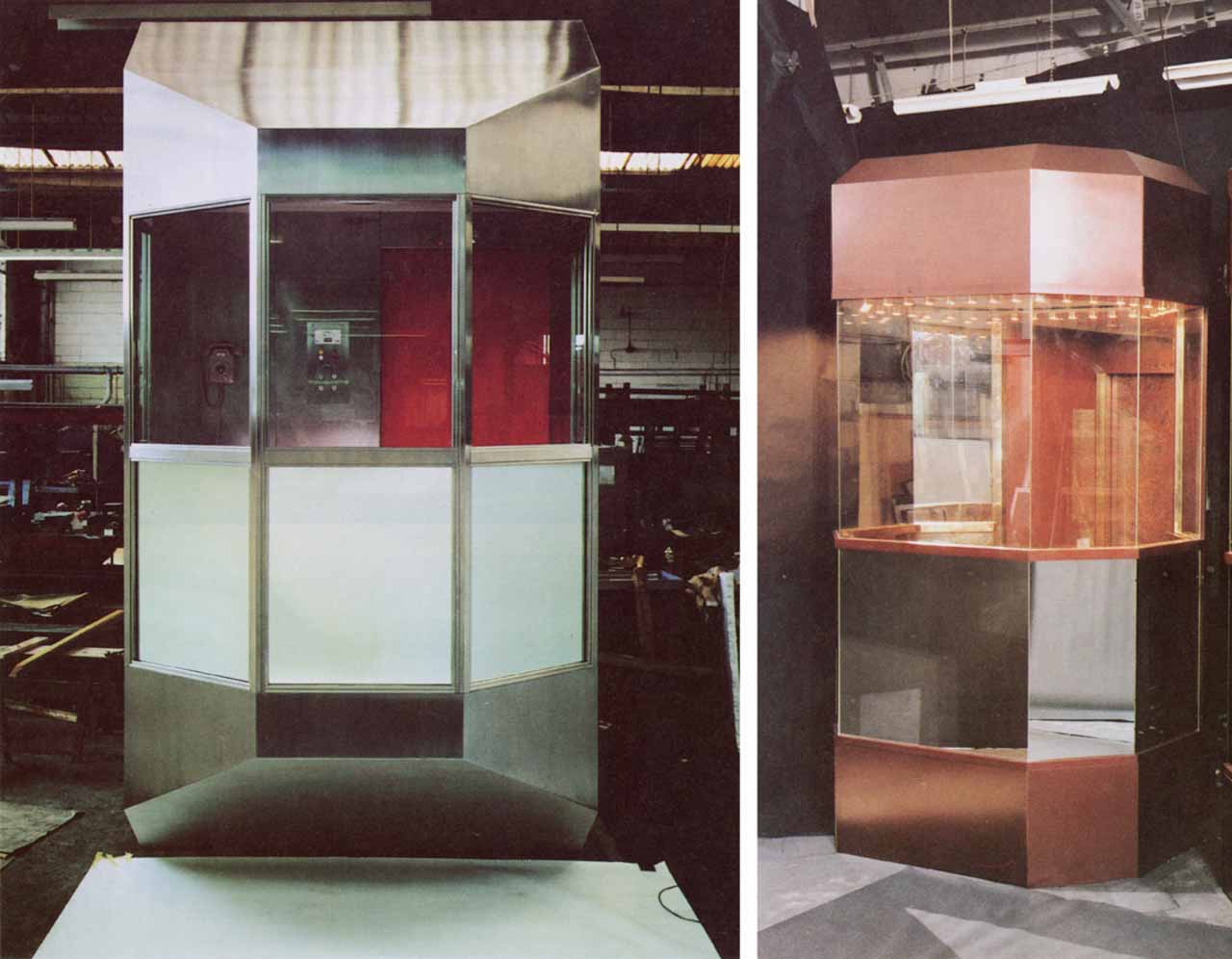
The result of this transatlantic collaborative investigation was the 1982 EW Annual Study, which was devoted to the U.K. VT industry. The study featured a 107-page illustrated account of Sturgeon’s travels, visits, conversations and findings; and an essay by Fazakerley titled “Fifty Years of NALM.” As was the case with the article describing his 1964 trip, Sturgeon’s account was written in the form of a diary, which was titled “An Editor’s Odyssey.”[4] Of the approximately 49 days he spent abroad, 40 were devoted to VT investigations. As was the case in the majority of his work, Sturgeon’s attention was equally divided between the present and the past. This article will focus on the U.K. industry’s “present” in 1982. (The more distant past will be the subject of future articles.)
A broad overview of the VT industry was provided by Sturgeon’s interactions with NALM during his visit. He attended a Council meeting, as well as meetings of the Contracts & Conditions Committee, Technical Committee and the Educational & Training Committee. One of his first observations was that the current NALM chairman was an American — something that was also noted by Fazakerley in his history of the organization:
“It was in October (1981) that the Association took the unprecedented step of appointing a foreigner as its chairman, Mr. Don Brooks (Schindler Lifts (UK) Ltd.). Despite endeavors to anglicize this American from Chicago, there are times when his lapses into the vernacular produce the odd puzzled expression, or a call for a translation. I understand NAEC has a Briton – actually a Welshman – as President, which all goes to prove how cosmopolitan the Industry really is.”[5]
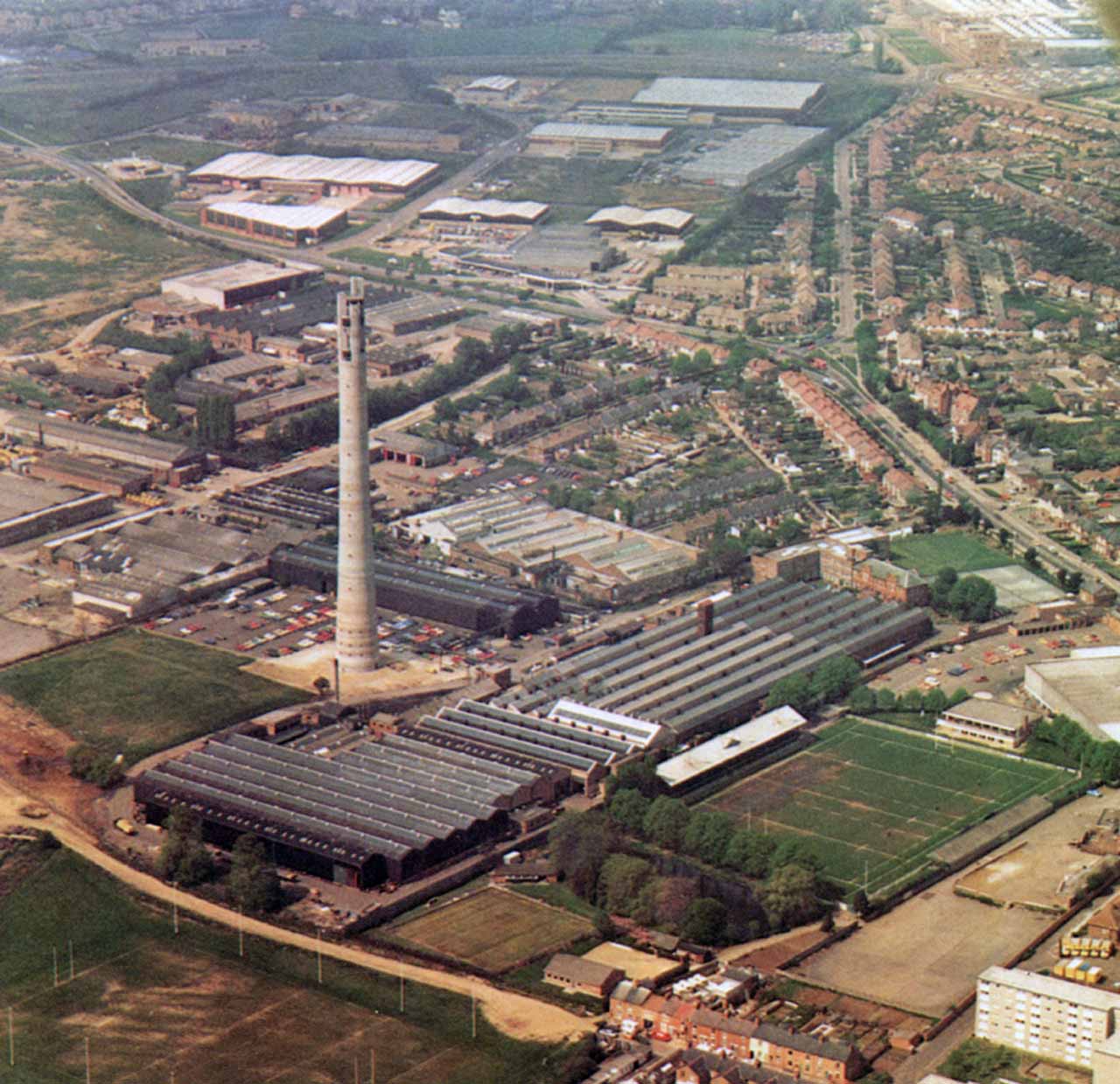
Donald “Don” W. Brooks (1933-2011) earned an undergraduate degree in Mechanical Engineering from the University of Illinois in 1956 and a Master of Business Administration from the University of Chicago in 1959. He began his lift career with A.O. Smith (Milwaukee), after which he joined the U.S. Elevator Co., working in San Diego and Chicago. He moved to Cheltenham in 1977 when he joined Schindler as managing director.
The Welshman mentioned by Fazakerley was Patrick C. Welsh. Originally from Grangetown, Cardiff, Welsh pursued studies at the Llandaff Technical College from 1952-1954, during which time he was also employed by F.H. Wheeler & Co. Ltd. (Cardiff). He was invited to visit the U.S. in 1956; however, the invitation did not come from a lift company. The Brooklyn Dodgers had offered him an opportunity to try out for their team. Although he was unsuccessful in his attempt to play professional baseball, Welsh decided to remain in America. He worked for the Armor Elevator Co. and Central-International Elevator Co. in NYC prior to moving from the East to the West Coast, where he worked for Armor’s service department in Los Angeles. In 1972 he joined the Advance Elevator Co. as vice president, was promoted to president in 1979, and was elected president of the National Association of Elevator Contractors (NAEC) in 1981.[6]
While the “cosmopolitan” or international aspect of the VT industry referenced by Fazakerley was evident in many of NALM’s activities, the agenda of the Council meeting attended by Sturgeon was decidedly U.K.-centric. The Advisory Committee, which was established to pursue actions (as needed) between council meetings, presented several reports. One report concerned a “recent judgment of the House of Lords concerning Valued Added Tax … It is borne out that this relates to non-structural alterations to a building losing their current zero-rating. The impact upon modernization of lifts might be considerable.”[4] Reports by NALM standing committees touched on a variety of topics. Charles Mansfield (Hammond & Champness), chair of the Contracts & Conditions Committee, reported on the “slow acceptance” of the 1980 edition of the Standard Forms of Building Contracts (prepared by the Joint Contracts Tribunal) due to “resistance on the part of the architects.”[4]
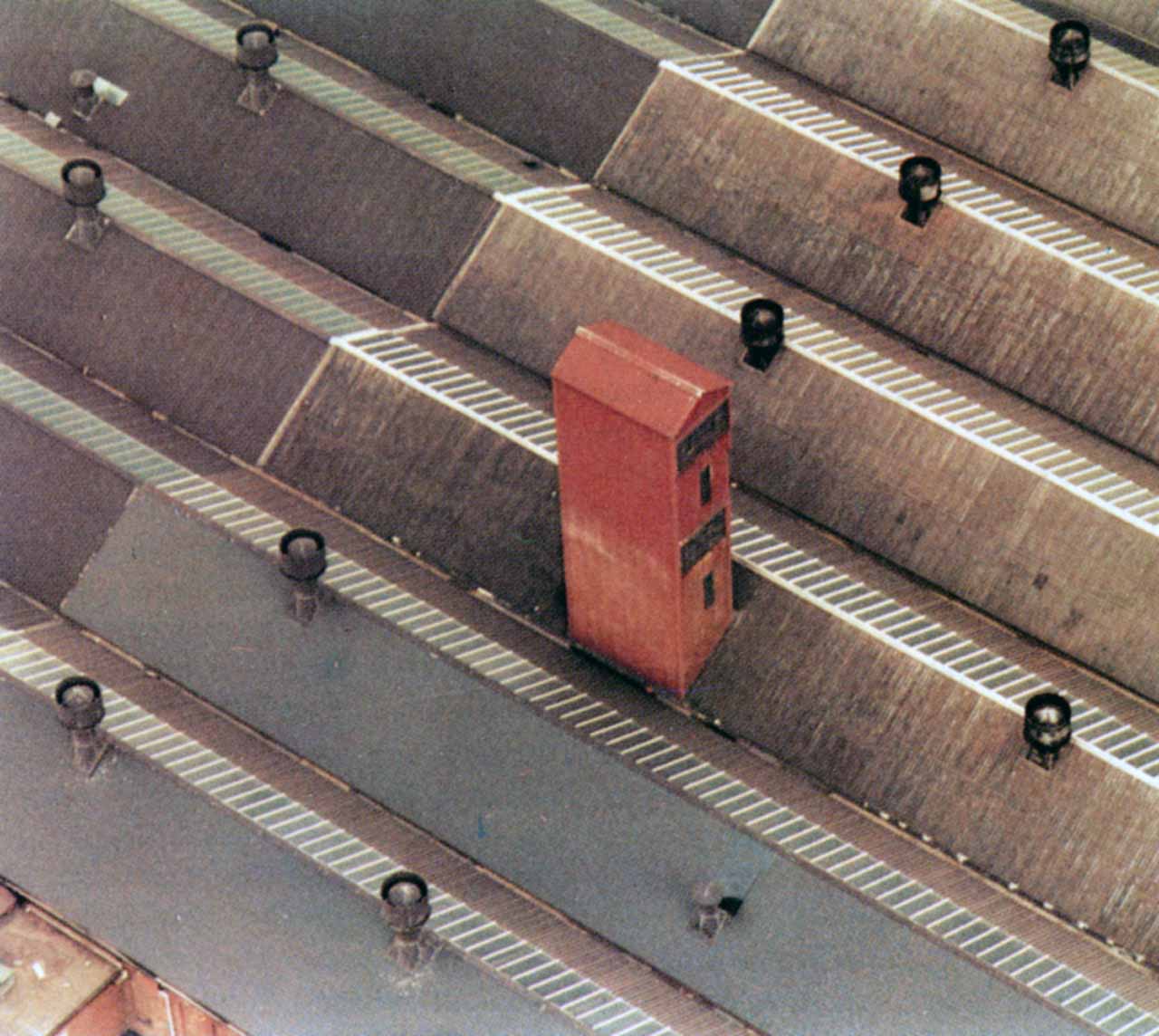
The Technical Committee, chaired by Roger Bedford (Express Lifts), reported on a debate in Parliament concerning escalator safety that had been prompted by a recent accident. James “Jim” M. Lickley (KONE/Marryat & Scott), a member of the Education and Training Committee, reported that the committee was looking at “Distance Learning and the possibility of a scheme being funded by the Manpower Services Commission.”[4] The latter had been established by Edward Heath’s Conservative Government in 1974 to coordinate and expand the government’s vocational training programs.
Lastly, the Advisory Committee highlighted a new initiative:
It is reported that 30,000 copies of a publicity brochure, “Don’t Take Risks,” had been distributed to 22 of the member companies for further dissemination to clients. The brochure dealt with the merit of utilising NALM members to perform regular maintenance. The purpose of this publicity piece had been to counter the loss of maintenance to small, newly formed service companies, often consisting of one or two men.[4]
This initiative is of interest because its primary intent was to confront a changing industry landscape and the problem presented by:
“The proliferation of the ‘pirates’ and ‘cowboys’ … small companies that had sprung up in the past 10 years to concentrate upon maintenance. When the government established a price-wage freeze, many men left the large companies so they could make more money. A long strike by the union also was instrumental in fieldmen starting their own companies … many of them being one and two-man outfits. They presented tough competition as they had little, if any, overhead and could perform maintenance with one man instead of two.”[7]
The changing nature of the industry was also reflected in Sturgeon’s meetings with NALM’s committees.
The membership of the Contracts & Conditions Committee included Mansfield (Hammond & Champness), Allan Bell (Express Lifts), Barry Thompson (O&K Lift Co.), Leonard Pinn (Schindler Lifts), Trevor Riddlestone (Hammond & Champness), Chris Knapp (Otis), Peter Lucas (KONE/Marryat & Scott) and Denis Appleby (Pickerings). During the meeting attended by Sturgeon, the committee addressed a broad range of topics, including:
“the problem of non-standard sub-contracts being used by many prominent Main Contractors; the usage of adjudicators (arbitrators) and the importance of an adjudicator’s name being included in the contract documents; the possible implication on lift and escalator deliveries if the Greater London Council places a ban on eight-ton capacity lorries in the city; possible changes in the NALM Index which establishes a procedure for price escalation; coordination with the Technical Committee on the Standard Maintenance and Operating Instruction Manual; the necessity for continuing to contest high claims of damages for delay levied by some Main Contractors; the review of FEM Contract Payment Forms; the matter of product liability; (and) holidays as set forth by the Building Industry.”[4]
This list serves as a reminder that, in the early 1980s, many European cities were seeking solutions to increasing traffic (and associated pollution) problems, which was reflected in London’s proposed ban on large-capacity lorries. It also raises questions, from an historical perspective, about the contents of the Standard Maintenance and Operating Instruction Manual and how it would compare to contemporary guides.
The NALM Technical Committee membership included Bedford (Express Lift), Brooks (Schindler), R.J. Colquhoun (Evans Lifts), David P. Gentle (Bennie Lifts), Les J. Gilbert (Hammond & Champness), Pettinger (Otis), Michael J. Savage (Schindler) and Doug H. Weston (O&K Escalators). The meeting attended by Sturgeon addressed several topics related to the increasing internationalization of lift industry standards. These included a “discussion of Component Type Testing to meet the (new) EEC Directive,” and the challenges presented by the lack of a UK testing facility.[4] In fact, Brooks reported that he had “customers requesting certification to BS 5655 without appreciating that no such testing facility now exists.”[4] The committee recommended investigating the cost of building a testing site.

Sturgeon also noted the challenges associated with the ongoing development of European standards:
“Much time is given over to items concerning the progress of the CEN committees, coordinating on drafts of documents concerning electric lifts, service lifts, and escalators. Problems are acknowledged in making technical translations from [one] language to another. In the instance of the draft on hydraulic lifts it will be necessary for additional editing before it can be passed on for national comment in the UK. It is borne out that the original purpose of coordination between the European lift industries was to reduce trade barriers but that nationalism and economic conditions have brought actions counter to this. Some countries are apt to apply special conditions – probably because of political pressure rather than by lift engineers – in order to perpetuate or establish barriers.”[4]
Another, apparently perennial, topic concerned escalator skirt guards and skirt switches. During the meeting, this subject was “soundly debated (as it has been worldwide for many years). The thought being that there is need for further research.”[4]
The final committee meeting Sturgeon attended was held by the Educational & Training Committee, chaired by Keith J. Thorndyke (Hammond & Champness). Members included Harold Bate (Evans Lifts), John James (Otis), Lickley (KONE/Marryat & Scott), Ron Lowles (Schindler), Richard “Dick” L. Mitchell (O&K Lifts), Chris C. Short (Shorts Lifts) and Stuart Weller (Express Lifts). The committee, established in 1978, was one of the newest NALM working groups and included several younger members, many of whom served as “company training officers.” The committee’s duties involved serving as a liaison between technical colleges, training boards and variety of professional organizations. The latter included the Chartered Institution of Building Service Engineers (CIBSE), the Engineering Employers’ Federation (EEF), and the Electrical, Electronics, Telecommunications and Plumbing Union (EETPU). Sturgeon reported that:
“A portion of the meeting is taken up with a discussion of the revised syllabus being coordinated with several colleges and much conversation about the various government schemes operating through the Manpower Services Commission. It is agreed that they are aimed at reducing unemployment on the short term without full consideration of the industry’s long term objectives; that they would not meet the industry’s needs which stressed quality instead of quantity. With the government economizing, funds going to the companies for training had been curtailed; the onus for financing of all training being placed on the members.”[4]
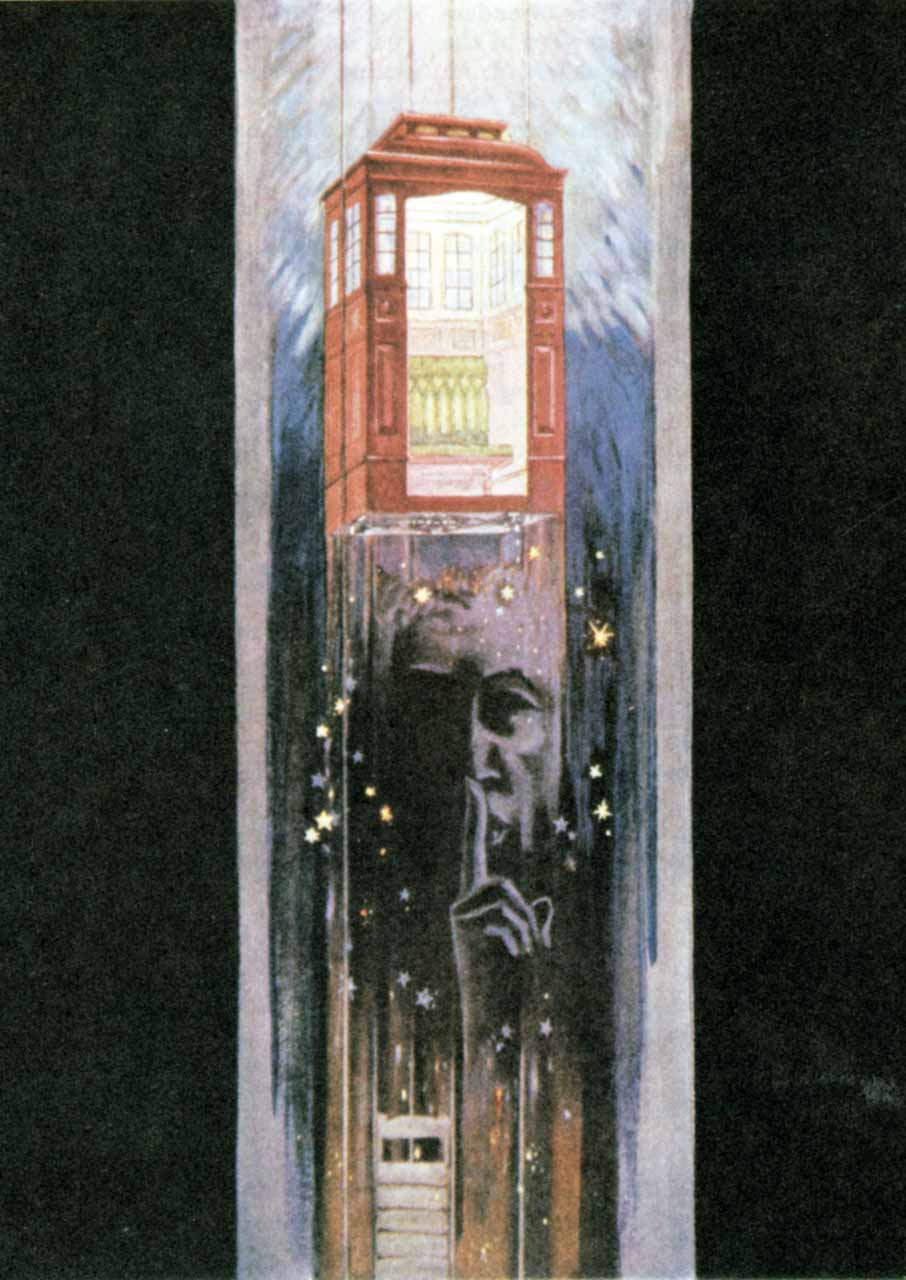
While the NALM Council and Contracts & Conditions Committee meetings had occurred in London, the other meetings occurred outside the city “to facilitate representation and attendance from throughout the country.”[4] The Technical Committee met in Broadway, Worcestershire, and the Educational & Training Committee met in Rothley, Leicestershire.
While attending NALM meetings was an important part of his visit, Sturgeon’s primary focus was on his investigation of the British lift industry as seen through its individual companies. This goal was achieved by visits to 23 lift companies, one escalator company and four industry-related companies. These trips took him throughout London and the English countryside — and included a trip to Scotland.
In London, he visited Aldous & Campbell, Becker Lifts Ltd., Dewhurst & Partner Ltd., George Johnson Ltd., Guidelines Installations, Hammond & Champness, Marryat & Scott, Otis Elevator Co., Porn & Dunwoody and Thames Valley Lift Equipment. Outside of London, he visited A & P Steven (Glasgow), Ellis & McDougall Lifts (Glasgow), Bull Motors Ltd. (Ipswich), O&K Escalators Ltd. (Keighley), O&K Lifts Ltd. (Keighley), Evans Lifts (Leicester), Otis Elevator Ltd. (UK) (Liverpool), F.M. Bell & Co. (Manchester), Express Lift Co. (Northampton), Shorts Lifts Ltd. (Shipley), Havenhill Ltd. (Tetbury), British Guide Rails Ltd. (West Bromwich) and Pickerings Ltd. (York).

In his accounts of these visits, Sturgeon sought to maintain a balance between reporting on the company’s history and its present operation. This blended approach, which on more than one occasion focused more heavily on the past than the present, produced an overview that paralleled the understanding yielded by his engagements with NALM. The lift industry, as reflected by the companies he visited, was both U.K.-centric and outward looking. The companies included several types of overtly “British” enterprises: those that were “locally” focused, those that had remained independent since their founding, and those that reflected a changing commercial landscape and were the product of the consolidation of smaller companies. Other companies were, perhaps, seen in the same light as Fazakerley’s appraisal of Don Brooks: as “foreigners.” The trend toward consolidation and the increasing internationalisation of the VT industry — as was reflected in numerous NALM initiatives — provides a logical lens through which to examine the companies visited by Sturgeon.
Otis, of course, had been a “foreign” presence in the U.K. since the end of the 19th century. By 1982, they had been joined by Schindler, Orenstein & Koppel Rolltreppen GmbH (O&K) and KONE. Schindler arrived in England in 1962 when they forged a relationship with Stone-Platt Industries (a well-known British textile company), as a means of entering the U.K. market (as Platt-Schindler). In 1968, they acquired Architectural Fabrications Ltd. in Cirencester, a company which had previously built cabs and entrances for Schindler. The company name was changed to Schindler Lifts (UK) Ltd., and in 1972, they moved their operations to Cheltenham, where they occupied the vacant H.H. Martin & Co., Sunningend Works. O&K entered the U.K. market through the purchase of an existing firm, Keighley Lifts Ltd. Founded as the Keighley Electrical Engineering Co. in 1895, they had gradually expanded through the purchase of Glasgow Lifts (Scotland), John McLean & Son Lifts (Northern Ireland) and Irish Lifts (The Republic of Ireland); after which they changed their name to United Lifts. They, in turn, were purchased by O&K, who established O&K Lifts Ltd. and O&K Escalators Ltd.

Perhaps the most interesting story of “foreign” intervention concerned KONE’s purchase of Marryat & Scott in 1982, the impact of which Sturgeon described in detail:
“Finland’s Kone had recently purchased Marryat & Scott. What are the implications? Lickley indicates that ‘More standard components will be used from Kone, reducing the level of manufacturing in the U.K.’ Kone had also purchased Armor in the United States in recent weeks. What was the effect of that? Armor had specialized in 350 fpm Dynadrive geared, united with the use of SCR’s. This would fill a niche in what Kone and Marryat & Scott produced. Armor’s tie-in with another U.K. company as an outlet would be amicably severed. What about Marryat & Scott’s joint research and development project with U.S. Elevator in California? It had been funded 50/50, for $1 million, originally, to pursue microprocessor development. Apparently, Marryat & Scott had concentrated on researching usage of such control equipment up to 300 fpm. while U.S. Elevator had zeroed-in on the higher speeds. Both had benefited from the combined effort over five or six years, culminating in [the] CMH microprocessor controller. Prospects were that the joint effort would be terminated amicably. Kone made escalators in France, having acquired the Westinghouse license for its modular type when it purchased the American Company’s European facilities. What of Marryat & Scott’s longtime relationship with Thyssen (EggersKehrhahn) that went back over 20 years? It along with manufacturers like by water from the power mains or would remain in effect, Scholey saying, ‘After all, we have sold about 900 E-K escalators in the U.K., it is a good arrangement.’”[4]
Sturgeon also commented on the impact of the sale on Marryat & Scott’s extensive overseas market. He noted that, while the details were still being decided: “East Africa and Trinidad would be left to Marryat & Scott. (And) some Marryat & Scott people would be integrated into the KONE office in Singapore which would become the regional headquarters for the Far East.”[4]
The plethora of images that accompanied Sturgeon’s text were a critical aspect of the 1982 Annual Study. They included images from old catalogs, photographs of original company locations and photographs of contemporary factories and products. The selection of images that accompanies this article represents a small sampling of the collection Sturgeon assembled. In fact, the wealth of information found in the study is such that it will be mined for future articles that will explore the U.K. lift industry’s origins in the 19th century and its expansion in the 20th century. Another topic, suggested by Marryat & Scott’s overseas sales, is the history of the lift industry — and lift technology — throughout the British Empire.
The Story of the Coasters
Editor’s Note: For at least several months, a pair of sturdy, stylized coasters had been sitting on a table in a hallway of the EW offices. The coasters are emblazoned with EW’s original logo, as well as both the year 1982 and the words “British Lift Industry Survey,” which led us to believe — rightly — that they were from our founder’s trip to the U.K. that same year. Our historian got to the bottom of it.
At the end of his visit with Dewhurst & Partner Ltd. during his 1982 U.K. tour, Sturgeon wrote that he received:
“(As) a parting gift … a packet of 50 assorted stainless-steel discs anodized in black, blue and gold and emblazoned with ELEVATOR WORLD’s logo and ‘British Lift Industry Survey 1982.’ These had been manufactured during the day in the lab where such anodizing was carried out in developing architectural fittings and fixtures for lift cars and entrances. Although designed as ‘coasters,’ the disks will make excellent ‘calling cards’ as the tour progresses.”
References
[1] Robert Browning, Home Thoughts, From Abroad (1845). Note: The chaffinch is one of the most widespread and abundant birds in Britain.
[2] “Elevator World in the UK: September 1964,” Elevator World UK (Q1 2023).
[3] “Introduction,” Elevator World Annual Study (1982).
[4] “UK Diary: An Editor’s Odyssey,” Elevator World Annual Study (1982).
[5] David Fazakerley, “Fifty Years of NALM,” Elevator World Annual Study (1982).
[6] “California Contractor Elected 32nd NAEC President,” Elevator World (February 1982).
[7] Sturgeon interview with Dennis Palmer (Porn and Dunwoody): “UK Diary: An Editor’s Odyssey,” Elevator World Annual Study (1982).
Get more of Elevator World. Sign up for our free e-newsletter.
